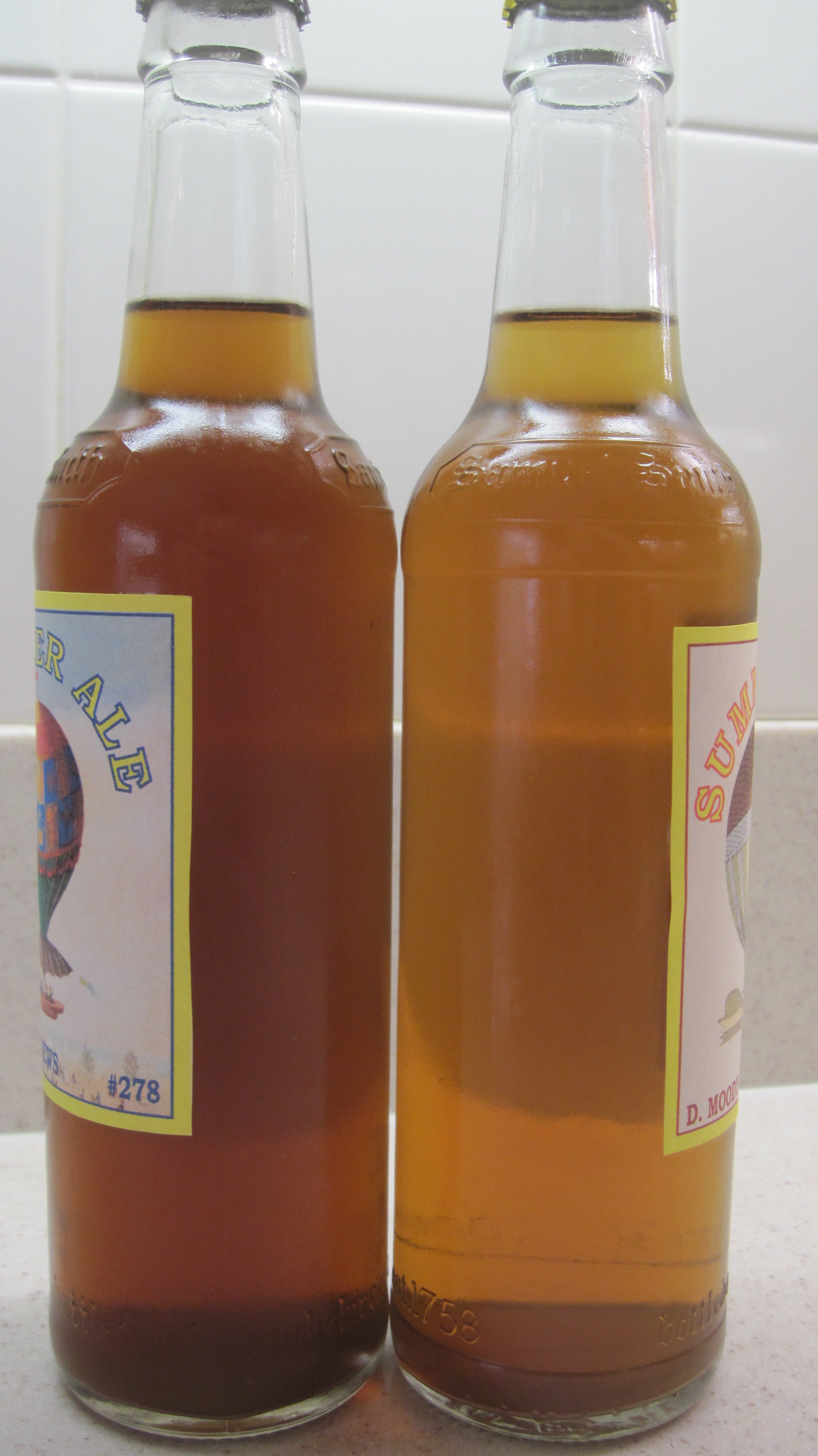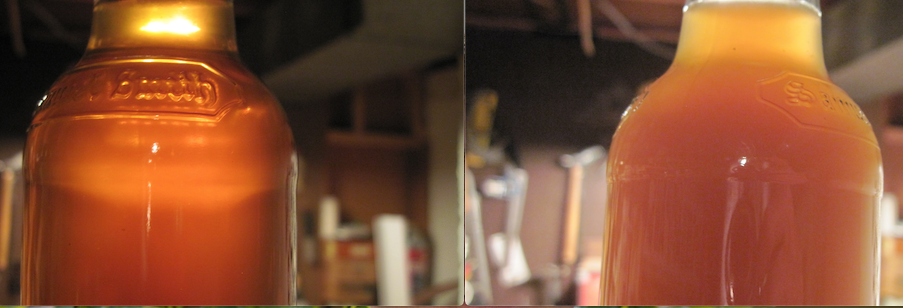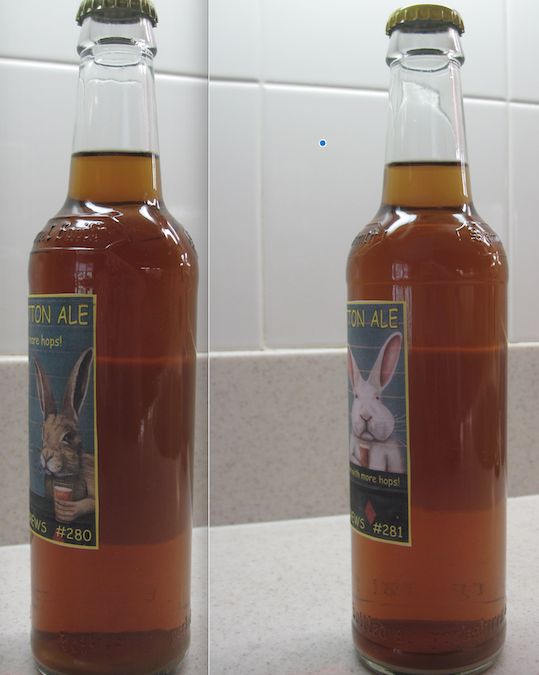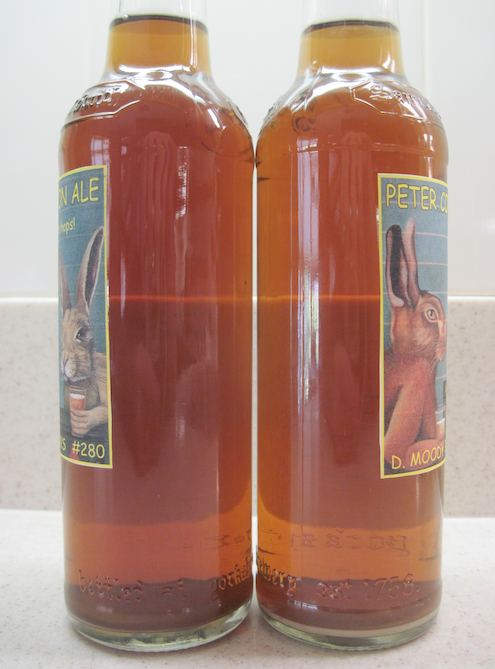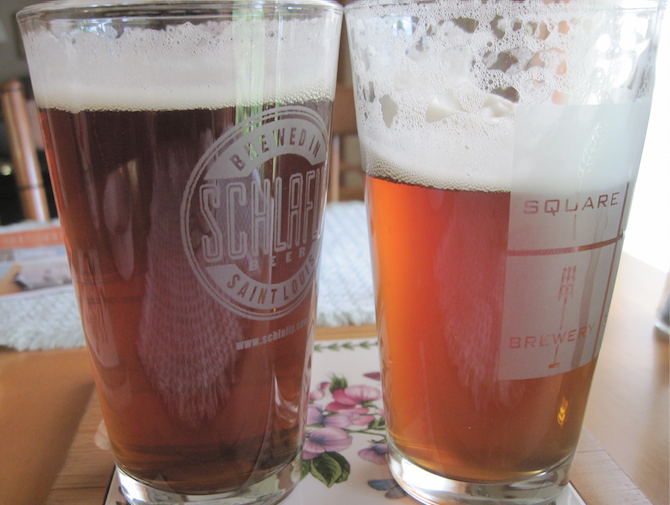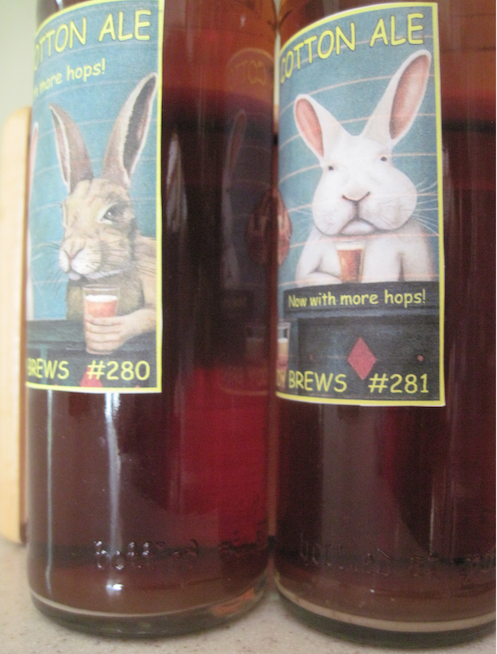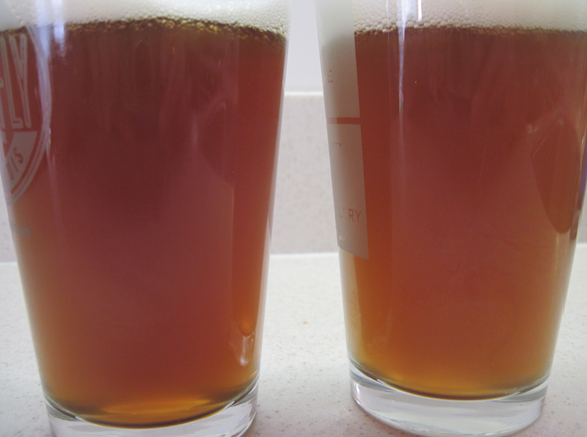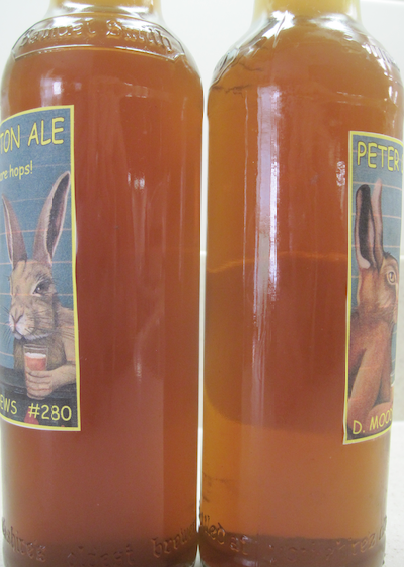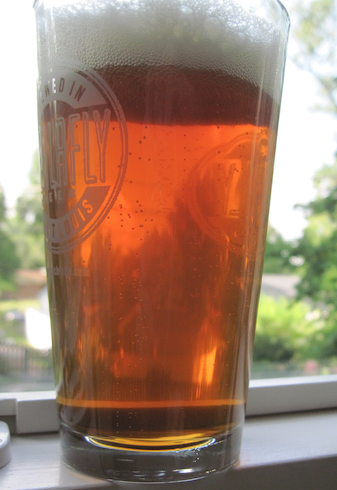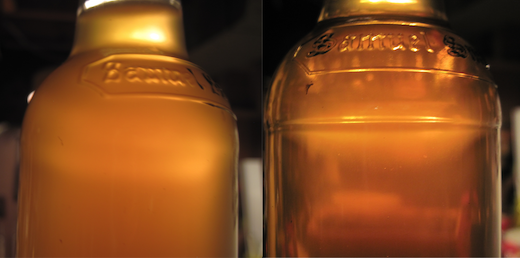Yesterday I did a comparison of batch #280 and batch #281. This was my "Peter Cotton Ale" that uses amber dry extract, Nugget and East Kent Goldings hops, some toasted pale malt, and S33 ale yeast. (The recipe is here:
I brewed a favorite recipe today) Batch #280 was brewed 5/26, transferred to a secondary 6/1, and bottled 6/9. Batch #281 was brewed 6/2 and bottled 6/16.
At bottling, #280, left, was clearer and #281, right, was cloudier.
This is a combined picture when each was ten days in the bottle. Both are clear and about the same color.
Yesterday, 7/7, they looked like this side by side:
#281 is slightly lighter. This is more apparent in the glass, #281 on the right:
There is much more sediment in #281, which is a week younger and did not undergo a secondary. It required care not to disturb it when pouring.
There was no difference in clarity, a big difference in sediment, and #280 was just slightly darker. Neither I nor my fellow taster preferred one over the other: they tasted almost the same.
In this comparison #280 was four weeks in the bottle and #281 was three weeks in the bottle. I will do weekly comparisons for a while to see if differences develop and to see if the greater sediment in #281 becomes less irksome.
7/14
#280, left, five weeks in the bottle and #281, right, four weeks in the bottle:
The difference in color has lessened. #281, no secondary, has a sharper taste. No strong preference for either, but, if I had to pick, I'd go for #280's smoother taste.
7/21
#280, left, six weeks in the bottle and @281, right, five weeks in the bottle:
There is little difference in color, but #280 is slightly darker. #281 has become easier to pour, but not as easy as @280. We had a taste preference for #280 as being smoother.
7/23
Today i conducted a blind taste taste on my fellow taster. One glass held #280 and two held #281. My taster selected which one was different and expressed a preference for #280, the batch that experienced a secondary. The color difference is more marked in the small glasses used in the test. #280, left, is darker. and #281, right, is not as clear as sediment was disturbed in doing the testing.
7/28
Today I did another comparison: #280 seven weeks in the bottle and #281 six weeks in the bottle.
I'm not bothering to post a picture as they look the same as trey did last week and in the 7/23 testing. My preference in taste is for #280, the batch that experienced the secondary. I can enjoy #281 if I just drink it alone. The sediment in #281 is still aggravating. For the eight week test, I will put them in the refrigerator for several days to see if that helps with that.
8/4
Another test today. #280 eight weeks in the bottle and #281 seven weeks in the bottle. I still like them both, but the extra time in the fridge did not keep the sediment in #281 from being a pain. I might try to save two to compare when my older son, who also home brews, is here in September. This will probably be past their "best by" dates, but worth a shot.



































![Craft A Brew - Safale S-04 Dry Yeast - Fermentis - English Ale Dry Yeast - For English and American Ales and Hard Apple Ciders - Ingredients for Home Brewing - Beer Making Supplies - [1 Pack]](https://m.media-amazon.com/images/I/41fVGNh6JfL._SL500_.jpg)
















